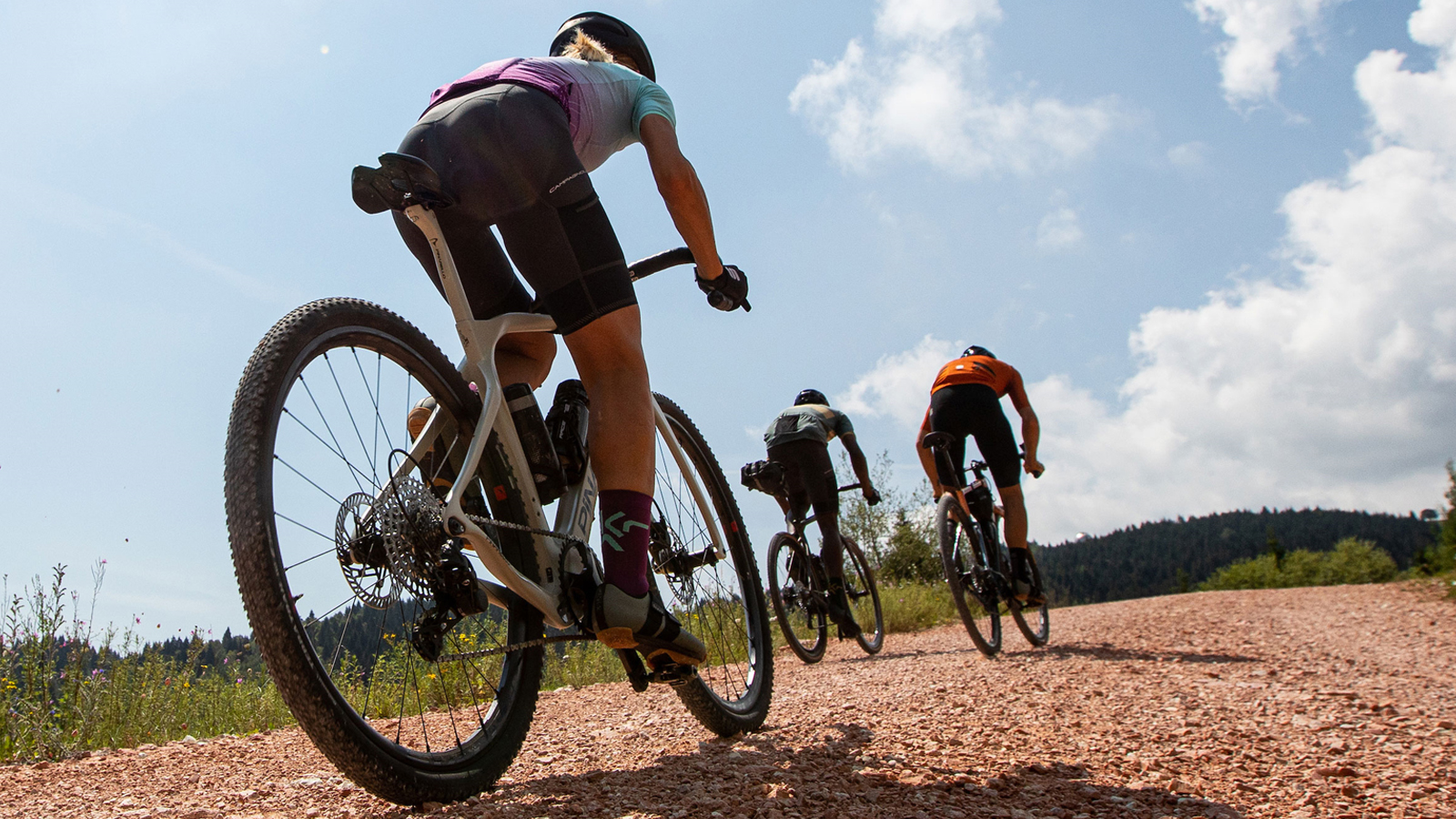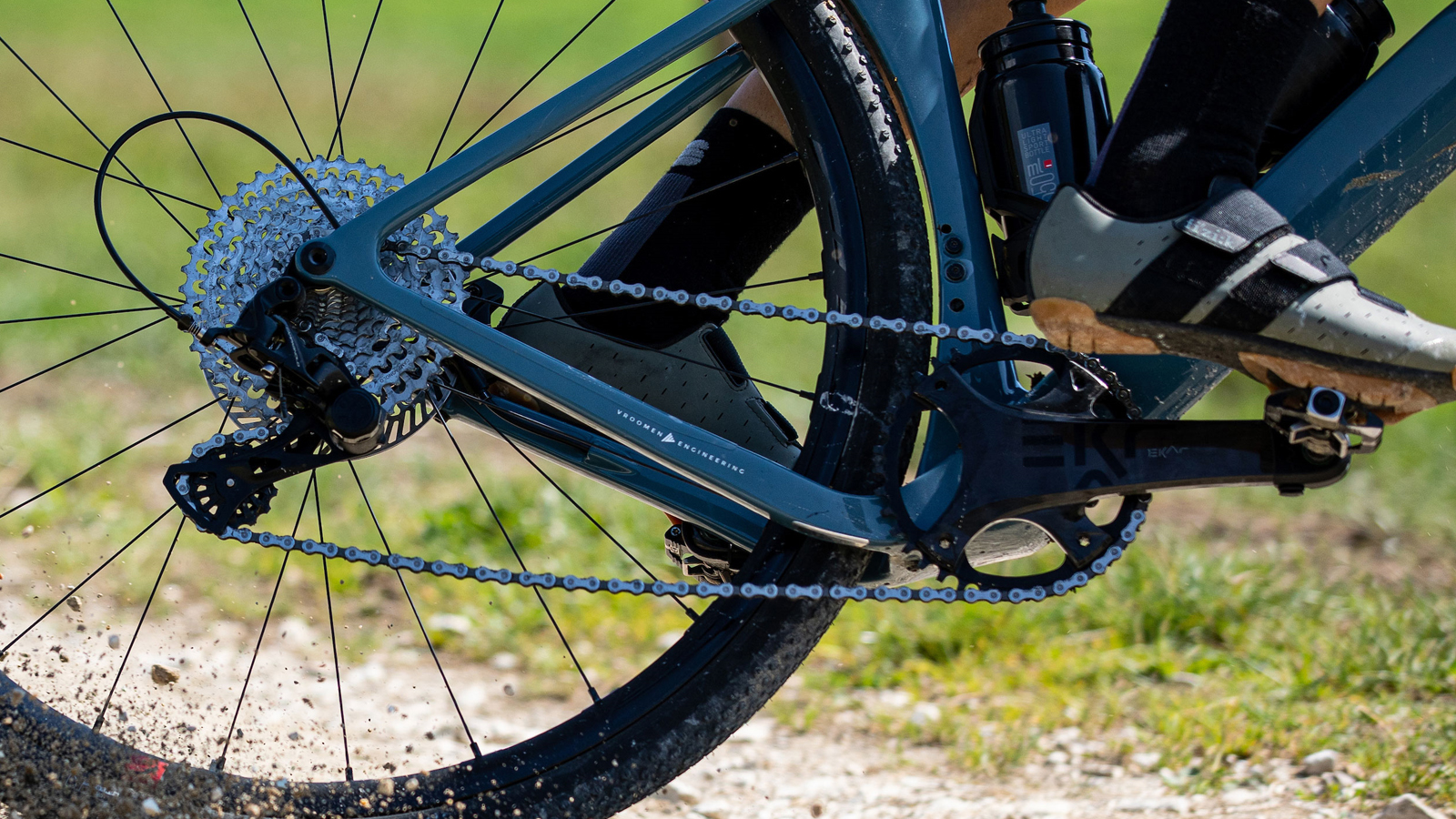Has Campagnolo's Ekar reignited the 1X road drivetrain debate?
Could Campagnolo’s new 13-speed gravel groupset be the start of a 1X revolution in road cycling?

While 1X systems have become the norm for off-road cycling endeavours of all kinds, it has not proven as welcomed on-road. We all undoubtedly remember 1X’s flash-in-the-pan debut on the race circuit, ridden by the Aqua Blue Sport team before everything went pop, with Rick Delaney famously venting his frustrations saying "This lab rat thing is now costing results." The 1x road concept looked to be relegated to the road tech history books alongside other bright ideas like Biopace and active road bike suspension systems.
Road cycling has a staunch yet inconsistent conservatism towards new tech. Adopting new materials and optimised aero shape with little questioning yet changing the mechanics of a bike is always met with opposition. Disc brakes for example revolutionised off-road riding and offer unquestionable improvements to performance and safety yet has somehow been met with resistance. Road tubeless is another recent subject that is sure to light up comments sections when the suggestion is made that its better than physically gluing a tyre to the rim.
As consumers become comfortable and confident with a product, the tide changes and it will become mainstream. Almost all top of the range road bikes are now disc brake only, but it took quite a long time to get there. 1X may be following suit, we are already seeing brands such as Specialized quietly including a 1X Tarmac SL7, for example, but there's a long way still to go. Gone are the days of mismatched components and curated setup, bodged together in a rough resemblance of compatibility. Awkward mongrels of cyclocross and mountain bikes filled with compromises. In the short two years since Aqua Blue Sport, 1X technology has shown huge levels of development with complete drivetrains developed to work seamlessly as a system. Just looking back at the gear cassette and gear ranges they had available shows the improvements that have been made making 1x far more suited to road riding.
- Best gravel bikes: Fun and fast adventure bikes for your next off-road ride

The Aqua Blue 1X system was based around an 11-36t 11-speed cassette and paired with a 48t chainring, although course dependant, this could be swapped out. That gives a 327 per cent gear range compared to the 428 per cent of a standard double setup. Campagnolo’s Ekar groupset offers a considerably larger 466 per cent range using its 9-42t cassette and there are gravel groupsets that offer more.
The range isn’t everything, though, the steps between gears must allow effective management of cadence. Campagnolo paid close attention to the spread of gears offered and, utilising the move to 13-speed, has been able to maintain closer ratios across the top six gears of the cassette before opening up to bigger jumps in the lower gears. It has also been able to utilise the 9t sprocket for smoother shifting by avoiding the need to make the chain perform heroic leaps to a 50t sprocket at the top of the cassette.
By using a 1x system such as Ekar comes other advantages over a standard double setup. Ekar is a claimed 2,385g in its lightest guise (1x 13-Speed Disc Brake, 9t-36t) which makes it directly competitive with top-end electric road groupsets. It must also be remarked that this is a mechanical gravel groupset designed for the rigours of gravel riding so there is plenty of room for further slimming if needed. Durability is designed into a gravel groupset as is chain security which should mean dropped chains should be nonexistent even on the roughest pave. Fewer moving parts also reduce the number of things that can go wrong and require maintenance, not to mention more aero although by how much remains to be seen.
From a user experience standpoint 1x brings a lot of simplicity to riding as well. For my Campagnolo Ekar review, I spent a lot of time riding both off- and on-road. The binary harder or easier approach to gear changing was refreshing with zero concerns around less than ideal combinations or mistimed shifts causing dropped chains. Of course, electronic gearing with synchro or sequential settings can take much of the thinking out but you still need to wait for the front derailleur to move between chainrings. Removing the extra gear changing at the front gives more scope for calculating line choice, perfecting body position and timing attacks. Moving back to a double ring setup has felt out-dated, with unnecessary steps and considerations when all I’m interested in is concentrating on riding my bike as hard as I can. Now I've experienced an alternative, the widely accepted double chainring option feels inferior.
Get The Leadout Newsletter
The latest race content, interviews, features, reviews and expert buying guides, direct to your inbox!
We are unlikely to see the death of the front derailleur or the appearance of 1X drivetrains in the pro peloton any time soon - except perhaps in specific time trial scenarios. Sponsors and teams are unlikely to want to take a gamble on a still-relatively-new tech that could potentially decide a season’s results. While the bikes of professional teams are undoubtedly examples of bicycle excellence, I have long been a believer that for the everyday rider, replicating such bikes is a disservice to your riding experience. As consumers we aren’t tied to contracts and competition regulations, instead, we can and should experiment with new technology rather than wait for the approval of the professional field.
Ekar 13-speed groupset shows 1X systems are at a point where the benefits in weight, performance and user experience can outweigh the traditional road bike groupsets of today.
Graham has been part of the Cyclingnews team since January 2020. He has mountain biking at his core and can mostly be found bikepacking around Scotland or exploring the steep trails around the Tweed Valley. Not afraid of a challenge, Graham has gained a reputation for riding fixed gear bikes both too far and often in inappropriate places.